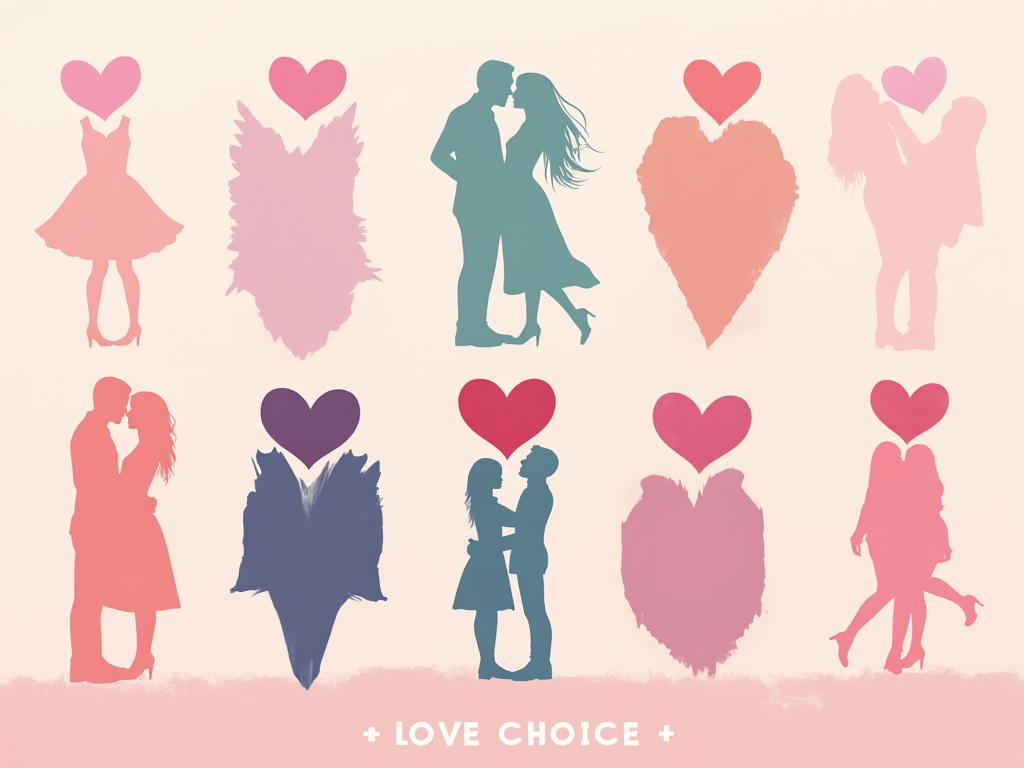
Choose Love Over Fear: Breaking Negative Patterns in Relationships
Reading time: 8 minutes
Ever notice how fear can quietly sabotage your best relationships? You’re not alone. Let’s dive into transforming fear-based patterns into love-driven connections that actually last.
Table of Contents
- Understanding Fear-Based Relationship Patterns
- The Love vs. Fear Mindset in Modern Dating
- Breaking the Cycle: Practical Strategies
- Building Love-Based Connections
- Your Transformation Blueprint
- Frequently Asked Questions
Understanding Fear-Based Relationship Patterns
Picture this: Sarah meets someone amazing on a dating app. The conversation flows naturally, they share similar values, and there’s genuine chemistry. But within weeks, she’s analyzing every text delay, assuming the worst, and pulling back emotionally. Sound familiar?
Fear-based patterns aren’t character flaws—they’re protective mechanisms that often outlive their usefulness. According to relationship researcher Dr. John Gottman, 69% of relationship conflicts stem from perpetual problems rooted in fundamental differences, but fear amplifies these into deal-breakers.
Common Fear-Driven Behaviors in Digital Dating
Let’s get real about what fear looks like in modern relationships:
- Overthinking digital communication: Dissecting every emoji, response time, and word choice
- Preemptive rejection: Ending things before they can “inevitably” go wrong
- Comparison spiraling: Constantly measuring your connection against social media highlights
- Avoidance patterns: Staying surface-level to avoid vulnerability
- Control mechanisms: Trying to manage outcomes through manipulation or testing
The Neuroscience Behind Relationship Fear
Here’s what’s actually happening in your brain: When we perceive relationship threats, our amygdala triggers fight-or-flight responses faster than our prefrontal cortex can process rational thought. This means fear literally hijacks your ability to respond authentically.
Research from UCLA shows that social rejection activates the same brain regions as physical pain. Your brain doesn’t distinguish between a broken bone and a broken heart—both trigger survival mode.
The Love vs. Fear Mindset in Modern Dating
The difference between love-based and fear-based approaches isn’t about blind optimism versus healthy caution. It’s about where you operate from internally.
Fear-Based Dating Approach
“What if they lose interest? I need to protect myself.”
Love-Based Dating Approach
“I’m curious about this connection. Let’s see what unfolds naturally.”
Love vs. Fear Response Patterns
Case Study: Maria’s Transformation
Maria, a 29-year-old marketing professional, spent two years in a cycle of exciting first dates followed by self-sabotage. Her pattern? As soon as someone showed genuine interest, she’d find reasons why it wouldn’t work.
The turning point came when she realized her fear of abandonment (rooted in her parents’ divorce) was creating the very rejection she feared. Through conscious practice, she learned to:
- Pause before reacting to relationship triggers
- Communicate her fears instead of acting from them
- Choose curiosity over assumption when interpreting others’ behavior
Result? Six months later, she’s in a healthy relationship built on mutual vulnerability and growth.
Breaking the Cycle: Practical Strategies
Breaking fear-based patterns isn’t about eliminating fear—it’s about changing your relationship with it. Here’s your practical toolkit:
The PAUSE Protocol
When you notice fear-based reactions emerging, use this four-step process:
- Pause: Take three deep breaths before responding
- Acknowledge: “I notice I’m feeling scared about…”
- Understand: “This fear is trying to protect me from…”
- Select: “I choose to respond from love by…”
- Execute: Take the love-based action
Rewriting Your Internal Narrative
Fear-based patterns often come with limiting stories. Here’s how to rewrite them:
| Fear-Based Story | Love-Based Reframe |
|---|---|
| “People always leave me” | “I’m learning to attract compatible partners” |
| “I’m not worthy of love” | “I’m growing into my worthiness daily” |
| “Vulnerability leads to pain” | “Vulnerability creates authentic connection” |
| “I must be perfect to be loved” | “My authentic self attracts right people” |
| “Love always ends in heartbreak” | “Each connection teaches me something valuable” |
Digital Communication Strategies
In our digital dating world, fear often manifests through screen-mediated communication. Here’s how to choose love over fear in your digital interactions:
- Assume positive intent: Instead of imagining the worst, give people the benefit of the doubt
- Communicate directly: Replace passive-aggressive hints with clear, kind communication
- Share your experience: “I noticed I felt anxious when…” instead of “You always…”
- Practice digital vulnerability: Share something real rather than maintaining a perfect facade
Building Love-Based Connections
Love-based dating isn’t about being naive or unprotected. It’s about being intentionally open while maintaining healthy boundaries. Let’s explore what this looks like practically.
The Three Pillars of Love-Based Dating
1. Radical Self-Acceptance
You can’t love someone else authentically if you’re at war with yourself. According to research by Dr. Kristin Neff, self-compassionate individuals report 23% higher relationship satisfaction compared to their self-critical counterparts.
Practice: Start each dating interaction by affirming your inherent worth, regardless of the outcome.
2. Curious Communication
Instead of trying to impress or protect, approach conversations with genuine curiosity about the other person’s inner world.
Practice: Ask questions that go beyond surface level: “What’s something you’ve learned about yourself recently?” instead of “What do you do for work?”
3. Outcome Independence
Attachment to specific outcomes breeds fear. Love-based dating means being invested in the connection while holding the results lightly.
Practice: Set intentions for how you want to show up, not for what you want to happen.
Case Study: David’s Digital Dating Breakthrough
David, a 34-year-old software engineer, struggled with online dating for three years. His fear-based approach involved crafting “perfect” messages and becoming devastated by non-responses. His match rate was decent, but conversations rarely progressed to meaningful connections.
His transformation involved:
- Authenticity over perfection: Sharing genuine interests rather than calculated conversation starters
- Quality over quantity: Focusing on fewer, more intentional connections
- Process over outcome: Celebrating good conversations regardless of their future
Within two months, his response rate increased by 40%, and he developed three meaningful connections that taught him valuable things about himself.
Navigating Modern Dating Challenges
Challenge 1: Social Media Comparison
Fear Response: Constantly comparing your relationship journey to others’ highlight reels
Love Response: Using others’ happiness as inspiration rather than competition
Challenge 2: Ghosting and Digital Rejection
Fear Response: Taking disappearance personally and shutting down
Love Response: Recognizing incompatibility as redirection toward better matches
Challenge 3: Vulnerability Timing
Fear Response: Either oversharing immediately or never opening up
Love Response: Gradual, reciprocal emotional intimacy based on demonstrated trustworthiness
Your Transformation Blueprint
Ready to shift from fear-based to love-based dating? Here’s your actionable roadmap for the next 30 days:
Week 1: Awareness Building
- Track your patterns: Notice when fear drives your dating decisions
- Identify your triggers: What situations activate your protective mechanisms?
- Practice the PAUSE protocol: Use it three times this week when you notice fear arising
Week 2: Mindset Restructuring
- Rewrite your dating story: Challenge one limiting belief about relationships
- Practice self-compassion: Treat dating setbacks with the kindness you’d show a friend
- Experiment with vulnerability: Share something authentic in your conversations
Week 3: Communication Evolution
- Lead with curiosity: Ask deeper questions that reveal character and values
- Express your needs clearly: Practice direct, kind communication about your preferences
- Celebrate small wins: Acknowledge every moment you choose love over fear
Week 4: Integration and Growth
- Assess your progress: How has your dating experience shifted?
- Plan for challenges: Identify support systems for difficult moments
- Set loving intentions: Define how you want to show up in relationships moving forward
The future of dating belongs to those who can navigate both digital complexity and emotional authenticity. As we become more connected yet paradoxically more isolated, the ability to choose love over fear becomes a superpower that attracts genuine, lasting connections.
Your relationship journey is uniquely yours, but you don’t have to walk it alone. Every fear you transform into love not only improves your own life but contributes to a more connected, compassionate world.
What would change in your dating life if you approached every interaction from love rather than fear?
Frequently Asked Questions
How do I know if I’m operating from fear or love in my relationships?
Fear-based responses typically involve trying to control outcomes, protect yourself from potential pain, or seek validation from others. Love-based responses involve curiosity, acceptance of uncertainty, and focus on how you can contribute positively to the connection. A simple test: Ask yourself, “Am I trying to get something or give something in this interaction?”
What if being vulnerable in dating leads to getting hurt?
Vulnerability doesn’t mean being reckless with your heart. It means being authentic about who you are while maintaining healthy boundaries. The goal isn’t to avoid all pain—it’s to ensure that any pain you experience comes from taking worthy risks rather than from living in fear. Remember, emotional growth often requires some discomfort.
Can someone really change their relationship patterns, or are we stuck with what we learned growing up?
Neuroplasticity research shows that our brains can form new neural pathways throughout our lives. While early relationship patterns are influential, they’re not permanent. With conscious practice and consistent effort, you can absolutely develop healthier relationship habits. The key is patience with yourself and commitment to the process of change.

Article reviewed by Jan Novak, Mindfulness & Love Coach | Present-Moment Awareness in Relationships, on May 29, 2025
